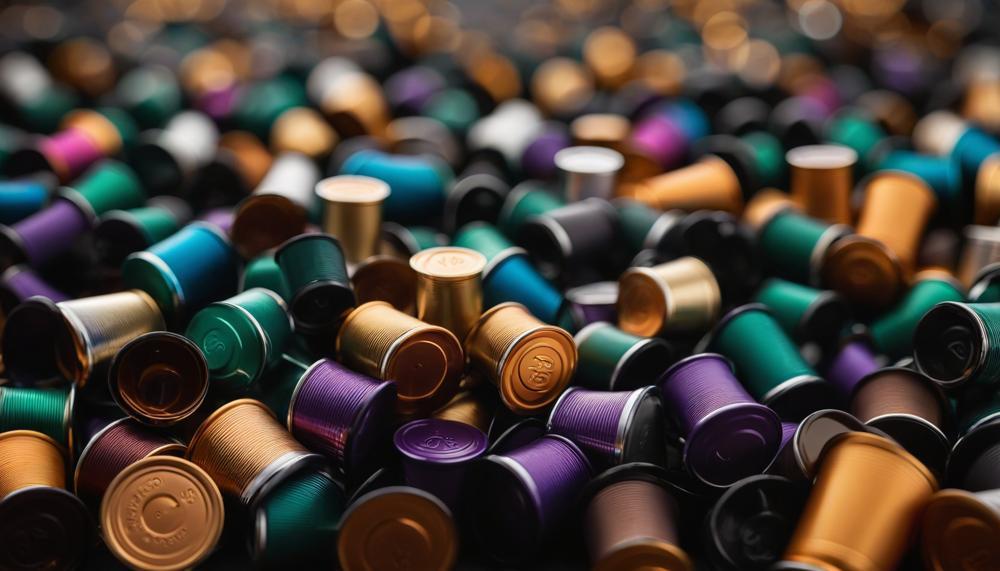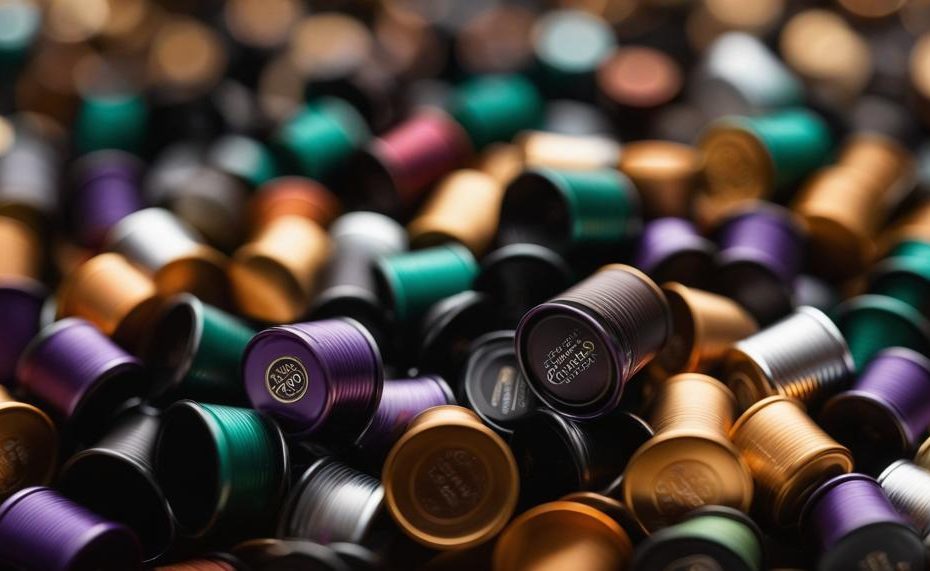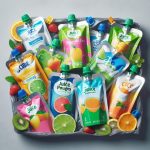Recycling Nespresso pods is easier than you might think and can make a big difference. These popular single-use coffee pods contribute significantly to landfill waste, but with a little effort, you can ensure they are recycled properly.
Nespresso pods are primarily made of aluminum and plastic, materials that need to be handled separately in the recycling process. Simply tossing them in your regular recycling bin won’t do the trick. Here’s a quick guide to get you started on recycling your Nespresso pods effectively:
- Empty and Rinse: Make sure your pods are free of coffee grounds by rinsing them out. This step is crucial for proper recycling.
- Separate Materials: If possible, separate the aluminum from the plastic. This isn’t always necessary, but it can help ensure each material is recycled correctly.
- Use Nespresso’s Recycling Program: Nespresso offers a convenient recycling program with designated drop-off points. This is the most reliable way to ensure your pods are recycled.
- Check Local Recycling Options: Some local recycling centers accept aluminum pods. Always verify their requirements first.
- Consider Refillable Pods: For a more sustainable option, use refillable pods. They reduce waste and let you enjoy your coffee guilt-free.
Recycling Nespresso pods isn’t just good for the planet; it also sets a positive example for sustainable living. Join the effort to keep our environment clean and enjoy your coffee responsibly.
Contents
Which Materials Can You Recycle?
Nespresso pods are primarily made from two recyclable materials: aluminum and coffee grounds.
Materials Used in Nespresso Pods
| Material | Recycling Process | Details |
| Aluminum | Melting and Reformation | Aluminum from Nespresso pods is melted down and transformed into new aluminum products. It is highly recyclable and can be repeatedly processed without losing quality. Learn more about aluminum recycling. |
| Coffee Grounds | Composting or Anaerobic Digestion | The coffee grounds inside the pods are repurposed for compost, enriching soil and supporting plant growth, or used for energy generation through anaerobic digestion, which produces biogas. Learn more about composting. |
Aluminum
Nespresso uses aluminum for its pods due to its excellent barrier properties, keeping the coffee fresh by protecting it from light, air, and moisture.
Once collected, the aluminum pods are sent to recycling facilities where they are melted down and reformed into new aluminum products.
This recycling process is efficient and sustainable, as aluminum can be recycled indefinitely without degrading its properties.
Coffee Grounds
The coffee grounds contained within the pods are not wasted. After the aluminum is separated, the coffee grounds can be composted, enriching the soil with organic matter and nutrients.
Alternatively, they can be processed through anaerobic digestion, a method that converts organic material into biogas, a renewable energy source.
How to Recycle Nespresso Pods
- Rinse the Pods: Ensure the pods are empty and free of residual coffee grounds by rinsing them with water.
- Separate Materials: If possible, separate the aluminum from the coffee grounds.
- Use Nespresso Recycling Programs: Participate in Nespresso’s recycling program, which provides collection points and specialized recycling facilities.
- Local Recycling Centers: Check with your local recycling center to see if they accept aluminum pods and if they have any specific requirements, such as crushing or flattening the pods.
Keurig K-Cups
Keurig K-Cups can be recycled by following these steps:
| Step | Description | Details |
| Separate Components | Disassemble the K-Cup | Peel off aluminium lid, remove coffee grounds and paper filter, clean plastic cup |
| Check Local Recycling | Verify local recycling capabilities | Ensure local facility accepts #5 plastic. If not, consider alternatives |
| K-Cycle® Program | Utilise Keurig’s recycling service | Enroll in K-Cycle®, collect used pods in provided bins, send back for recycling |
| Reusable/Compostable Pods | Opt for sustainable alternatives | Use reusable pods with your coffee or compostable pods that break down naturally |
Nescafé Dolce Gusto Pods
Yes, Nescafé Dolce Gusto pods can be recycled. Here’s how you can do it:
Nescafé Dolce Gusto offers a dedicated recycling program and is also part of the Podback Scheme. To recycle your pods, follow these steps:
Sign Up for the Recycling Program
Register online for the Nescafé Dolce Gusto recycling program.
Collect Used Capsules
Collect your used pods and store them in a plastic bag.
Use the Collection Box
Place the bag of collected pods into a designated collection box.
Earn Rewards
By participating in the program, you can earn TerraCycle points which can be donated to your favourite non-profit organisations.
Additionally, you can use the Podback Recycling Bag, designed specifically to streamline the recycling process for Nescafé Dolce Gusto pods.
Nespresso Coffee Capsules
Nespresso coffee capsules can be recycled through several convenient methods, offering significant environmental benefits. Here’s how you can recycle them and the advantages of doing so:
Recycling Methods for Nespresso Coffee Capsules
Nespresso Boutiques and Partner Stores:
Drop off your used capsules at any of the over 122,000 collection points worldwide. This includes Nespresso Boutiques and partner stores.
Mail-In Recycling Program:
Request a free, postage-paid recycling bag with your coffee order.
These bags can hold about 200 used capsules from original machines or 100 Vertuo machine pods.
Once filled, you can hand them to your postal carrier or drop them at a Nespresso collection point.
Local Recycling Bins (Selected Locations):
In specific areas like New York City, you can place used pods directly into blue residential recycling bins without needing a bag.
Benefits of Recycling Nespresso Capsules
Environmental Impact
- Reduces Waste: Recycling prevents capsules from ending up in landfills.
- Resource Conservation: Aluminum is infinitely recyclable, reducing the need for raw materials.
Energy Savings
- Energy Efficient: Recycling aluminum saves up to 95% of the energy required to produce new aluminum from raw materials.
Product Life Extension
- New Products: Recycled aluminum can be transformed into various new products, from soda cans to high-tech gadgets, and even sneakers in collaboration with Zeta Shoes.
Tassimo T-Discs
Yes, Tassimo T-Discs can be recycled. Here’s how you can do it properly:
Recycling Tassimo T-Discs
Tassimo T-Discs and their packaging are recyclable through several methods, with the TerraCycle TASSIMO Recycling Program being the most prominent.
Steps to Recycle Tassimo T-Discs:
Collect Used T-Discs:
Gather your used Tassimo T-Discs and their packaging materials. Note that cardboard dispenser cartons should not be included.
Drop-off at TerraCycle Collection Points:
Locate a nearby TerraCycle collection point using their interactive map. Drop off your collected T-Discs and packaging there. TerraCycle will clean and melt the collected materials into hard plastic, which can be used to create new products.
Support Charities:
By participating in the TerraCycle program, you can earn points for the waste you drop off. These points can be donated to a charity of your choice, supporting a good cause while you recycle.
Alternative Options:
If there are no TerraCycle drop-off locations nearby, consider using the Zero Waste Box solution provided by TerraCycle. This allows you to mail in your used T-Discs for recycling.
Recycling Options at a Glance
| Method | Steps | Notes |
| TerraCycle Collection Points | Collect used T-Discs, find a local drop-off point, and deliver them. | Check the TerraCycle interactive map for locations. |
| Zero Waste Box | Purchase a Zero Waste Box, fill it with used T-Discs, and mail it in. | Suitable if no local drop-off points are available. |
| Local Recycling Centres | Check with local recycling centres if they accept T-Discs and follow their guidelines. | Cleaning of T-Discs may be required. |
Single-Serve Drip Machines Are a More Eco-Friendly Alternative
Single-serve drip machines offer a more eco-friendly alternative to traditional coffee makers through several significant ways:
- Reduction in Plastic Waste: Traditional coffee makers often rely on plastic-heavy components and disposable filters. In contrast, single-serve drip machines use biodegradable or reusable pods, significantly reducing plastic waste.
- Portion Control: These machines brew exactly one cup of coffee per use, minimizing coffee wastage. Traditional machines often brew more than needed, leading to unnecessary waste.
- Energy Efficiency: Single-serve machines are designed to heat only the necessary amount of water for one cup, using less energy compared to traditional coffee makers, which typically heat larger quantities.
- Sustainable Materials: Many single-serve machines are made from sustainable materials and are built to last longer, reducing the frequency of replacement and disposal.
- Recycling Programs: Brands often provide recycling programs for their pods, ensuring that used pods are processed in an eco-friendly manner. For example, Nespresso offers a recycling program for their aluminium capsules.
5 Things to Always Recycle

The top five items that should always be recycled are cardboard, paper, metal, glass, and plastics. These materials are prevalent in households and essential for effective recycling programs.
Cardboard
Cardboard is a staple in packaging, from shipping boxes to cereal containers. Recycling cardboard saves trees, reduces landfill waste, and conserves energy.
When recycling, ensure the cardboard is clean and dry.
Paper
Paper products include newspapers, magazines, office paper, and mail. Recycling paper prevents deforestation, reduces greenhouse gas emissions, and saves water.
Remember to remove any plastic windows from envelopes.
Metal
Aluminium and steel cans are the most common metals recycled. These materials are highly recyclable and can be turned into new products repeatedly without degradation.
Recycling metals conserves natural resources and requires less energy compared to producing new metal from ore.
Glass
Glass bottles and jars are recyclable endlessly without loss of quality. Recycling glass reduces the need for raw materials and decreases energy consumption.
Ensure the glass is clean and free from lids or caps.
Plastics
Plastics can be tricky due to the different types and recycling codes. Focus on recycling bottles, jugs, and containers marked with recycling symbols #1 (PET) and #2 (HDPE).
These types are widely accepted in recycling programs. Clean and dry the plastics before recycling.
Conclusion
Recycling Nespresso pods can be simple and impactful with just a few steps. These single-use coffee pods, made primarily of aluminum and plastic, contribute significantly to landfill waste. However, they can be effectively recycled with a bit of effort.
Start by emptying and rinsing the pods to remove coffee grounds, ensuring they’re ready for recycling. While separating the aluminum from the plastic isn’t always required, doing so can enhance the recycling process. Nespresso offers a convenient recycling program with designated drop-off points, making it easy to ensure your pods are properly processed. Additionally, some local recycling centers accept aluminum pods, so it’s worth checking their specific requirements.
For a more sustainable coffee habit, consider using refillable pods. They not only reduce waste but also allow you to enjoy your coffee with less environmental guilt. Recycling Nespresso pods not only helps keep our environment cleaner but also sets a positive example of sustainable living.





